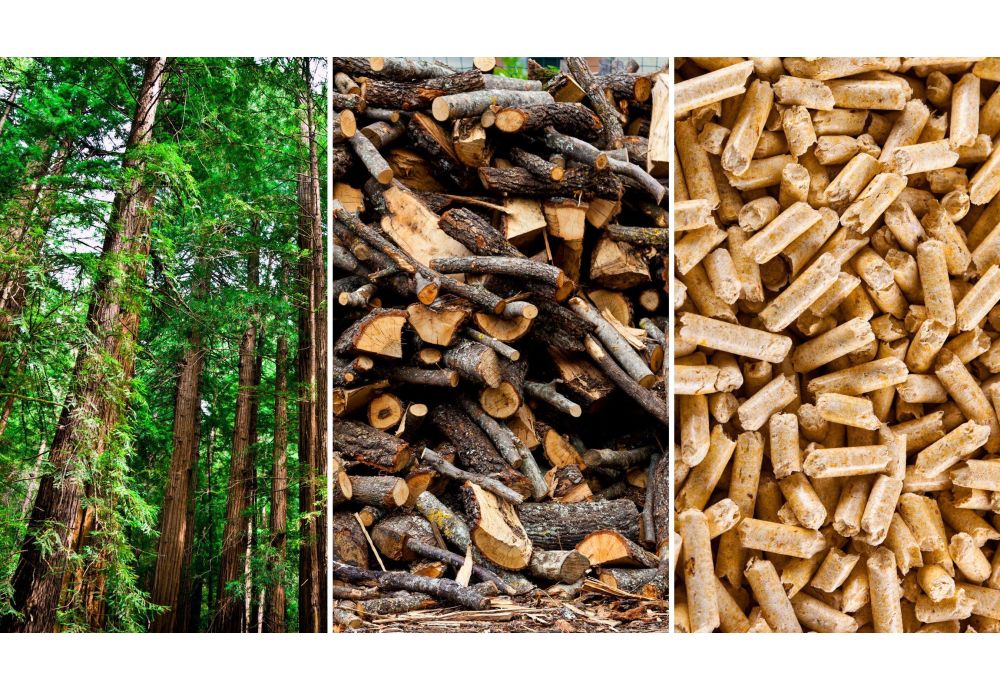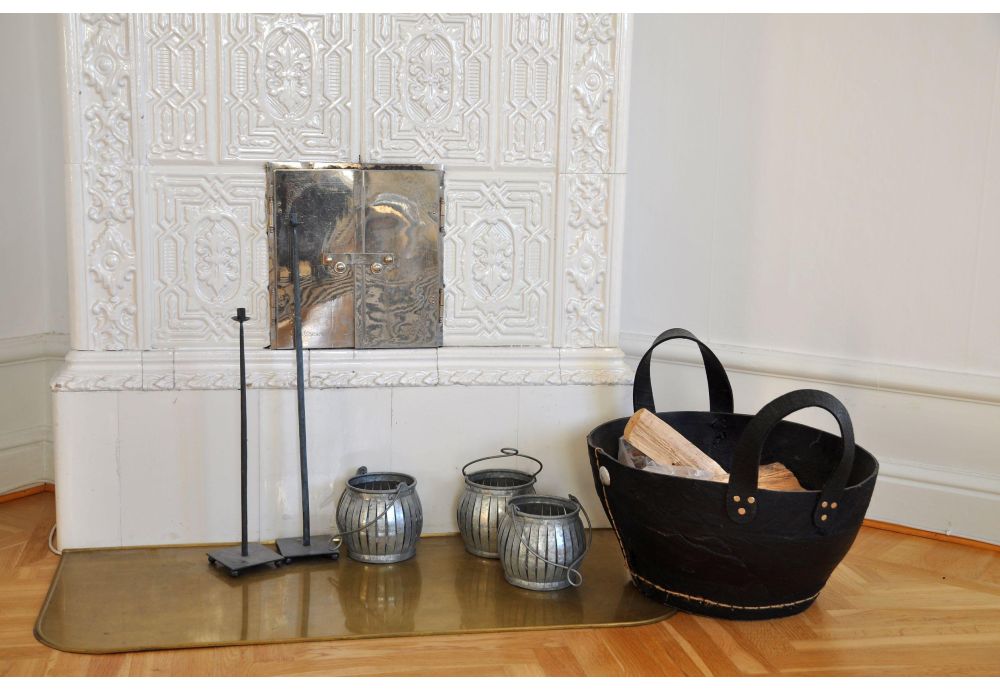As winter dawns on us, ideas of installing a new wood burning stove or log burner may cross our minds. After all, fireplaces, wood stoves and log burners are an attractive central feature in any room. However, you may likely already have a log burner or fireplace, in which case you may wish to amp it up or give it a spruce this season.
One notable way you can improve the style of your log burner is by adding tiles around or behind it, whether on the hearth or back wall. Moreover, wood burners tend to offer a warm glow which can really accentuate your tile's texture and enhance the ambiance of your living space.
Continue reading to learn everything you need to know about tile application for your log burner.
Can Tiles Sustain Heat?
Although many types of tiles are heat resistant, it is essential to keep them away from the direct source of heat to prevent breaking and, more usually, discoloration. Tiles should be placed 14 centimetres away from any fire or heat source.
Do I Need a Heat Resistant Tile Adhesive ?
Heat resistant tiles are useful, but so is the adhesive you employ to keep them in place which must be capable to withstand temperatures of a high degree.
For this we recommend Vitcas Heat Resistant Tile Adhesive, which has a ready mixed consistency. Remember to stir before use and apply up to 3mm thickness. As for grouting around the tiles, we recommend Vitcas Tile Grout. Alternatively, you can also use HB60 Heat Resistant Adhesive.
It is also significant to consider the substrate your tiles rest upon.
To ensure a level surface for tiling, even if the chimney wall is in poor shape, you may always utilise heat resistant planks.
Some Precautions For Using Tiles Behind Your Wood Burner
Porcelain tiles are an excellent choice for areas where the high temperature is a concern. As such, they make excellent choices for wood burners. Rather than using ceramic tiles, porcelain is the more suitable option for a fireplace surround.
Ensure to keep a minimum distance of at least 150mm from the wood burner or fireplace.
Around a wood burner, fire-resistant bricks are a common choice because of how well they absorb heat without spreading it to other objects.
In a similar vein, porcelain tiles perform admirably due to their density and production process.
Although the tiles can withstand some heat, it is preferable to avoid prolonged exposure to extreme temperatures. If you want your tiles to appear their best, give them some room to breathe.
What Tiles Are The Best Choice For A Wood Burning Stove?
Your tiling options have the potential to suit the entire design of your room and tie everything together. Depending on the tiles you select, your wood burner can either become an unnoticeable design element or stand out as a stylish focal point. You can use the following materials for tiling wood burning stoves:
Terra Cotta
The earthy tones of terra cotta help to create a cosy, laid-back atmosphere.
Slate
Slate is the material to use if you want to create a more natural look. Not everyone desires excess and pomp, but rather desires a stove which characterises simplicity and minimalism. Slate tiles come in many forms such as the split face tiles which can be found on the walls in more trendy, modernistic interiors.
Granite
Granite is the ultimate durable, long-lasting substance for wood burners. Walls and floors tiled with granite will last as long as they are standing since it is the hardest natural stone tile available.
Travertine
For the hearth, the walls and the floor around your log burner, travertine is ideal. Similarly to marble and other natural stone tiles, it is incredibly adaptable.
Marble
You can't go wrong with marble if you are looking for something that exudes timeless elegance and sophistication. It is a natural material, yet comes in a variety of colours each piece of this stone has its own unique coloration and patterning, giving it a timeless, varied appearance. It can amp up the look of the area around your log burner.
Porcelain
Finally, porcelain is among the most durable materials out there, which makes it an excellent choice for use behind a log burner. They also perfectly fit the style of traditional fireplaces.
What is the best way to tile the wall behind a wood stove?
Installation of tiles is as easy as pie. Here are the measures you need to take:
Take accurate measurements of the space you intend to tile. This will facilitate shopping for the appropriate quantity of board and tiles to cover the area.
When you commence grouting, don't forget to add an extra 1/8 inch (3.18 mm) to your measurements for the grout lines between tiles.
High Temperature Board
Instead of a cement board, we recommend using HT High-Temperature Board because it is heat resistant. The board must be measured, marked and cut to match the intended space, if necessary. As a surface, this board can withstand high temperatures without warping. This is what you will use to secure the tile in place.
The HT fire board must be fixed rigidly in place before any tiles are applied.
The next step is to perform a dry fit. This will help you mark and cut the tiles where they need to go by giving you a better idea of how they will fit in the space. Always keep that 1/8-inch (3.18mm) gap in mind!
In sections no larger than 4 square feet (0.37161 square metres) at a time, spread the adhesive on the floor, wall or whichever surface you will be tiling.
Apply pressure to the first tile and press it into place so it fits snugly. Here, a level can be used to check the vertical alignment of the tiles.
Tile spacers should be pressed against any edge that will touch another tile. The rest of the tiles can be put in the same manner. The heat resistant adhesive's drying time is estimated to be between four and eight hours- but it depends on the room temperature.
Next, this adhesive must be completely dry before you try to grout the tiles. Once this is done, you can start spreading grout over the tiles with a trowel. Take care to spread it evenly between each tile.
Use the rubber-edged trowel to scrape the excess grout joints around each tile.
You may now complete tiling behind your log burner by wiping down the tiled wall to eliminate any remaining surplus.
How To Make My Fireplace More Appealing?
When decorating a room that has a log burner, it is crucial to regard it as a key component in the space, like lighting or the colour of the paint. The size, shape, style and finish of the fireplace will all have an impact on the overall look and feel of your room.
It is essential that you make a decision as to whether you wish to make it the focal point in the space or whether you wish to integrate it in as a functional feature of the room.
Some ideas are to paint the surround of your fireplace the same colour as the walls in your room and then choose a simple matt tile with a regular laying pattern and a grout colour that coordinates with the tile. This will help your fireplace blend in.
However, if you want to put more attention on the fireplace or log burner, you can angle your furniture towards it and focus on making your fireplace stand out with the use of combination of colours, texture of surfaces and keeping the surroundings minimal. Alternatively, you can add a few stylish features to surroundings, whether it be a giant ornate rug on the floor, a piece of artwork on the wall or an architecturally influenced sofa.
To be the central focus of the room, the design of the fireplace and tiles should be compatible with the theme of the space and the impression you want to convey.
Final Verdict
If you opt for having a tiled stove or log burner, this should not pose much difficulty. However, ensure that you use the right heat resistant materials and follow the correct guidelines.
Frequently Asked Questions
What Kind Of Tiles Can Be Installed Around A Fireplace?
If the heat source is more than 20 centimetres away, it is okay to use nearly any type of tile. Nevertheless, porcelain tiles are recommended since they are more resistant to heat. Because of the high density of the tile, it can absorb heat without dispersing it to the areas around it, making it comparable to fire bricks that are used in construction.
Can You Use Porcelain Tiles Around A Log Burner?
Porcelain tiles are a modern alternative to brick around a fireplace or wood stove. Throughout the years, porcelain tiles have been established as a natural choice for use around fireplaces and log burners.
As a material that can withstand high heat without breaking, porcelain is suitable for this purpose.
If you want to use a classic wood or log burner, you will have to go through the trouble of choosing a sealer for your tiles to keep soot and ash debris from penetrating the surface and ruining the tile after the burner has been fired up many times.
However, if you want the best solution, we would recommend the glazed porcelain tile.
Can You Use Ceramic Tiles Around A Wood Burning Stove?
Ceramic tiles can be used around a stove, although there is a possibility that their glaze will crack. Whereas, if porcelain is heated to an extreme temperature, it develops a spiderweb pattern of near-cracks. However, porcelain tiles are stronger but less porous and hence do not absorb water. This makes them less susceptible to cracking.













